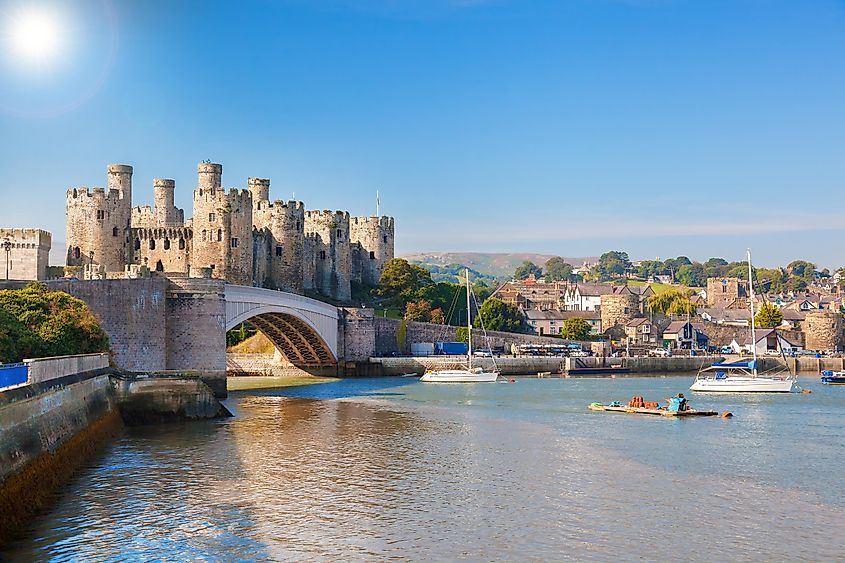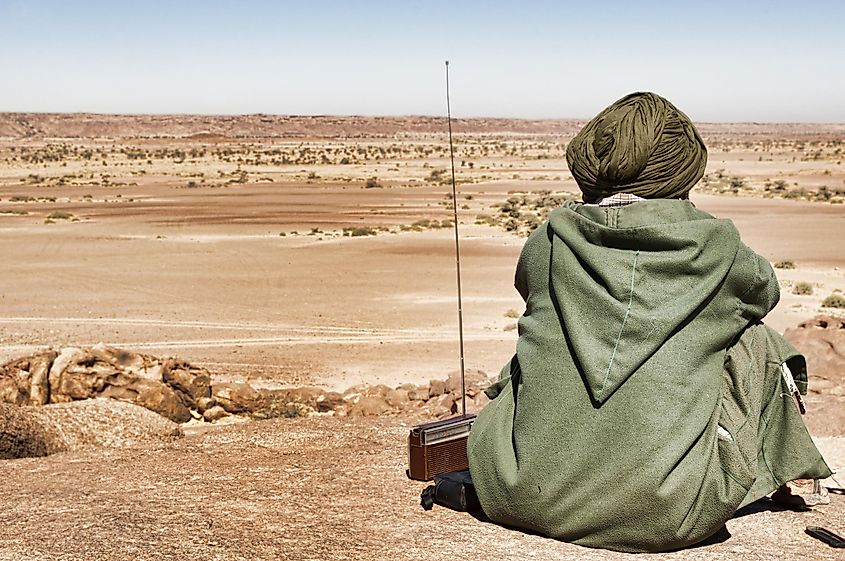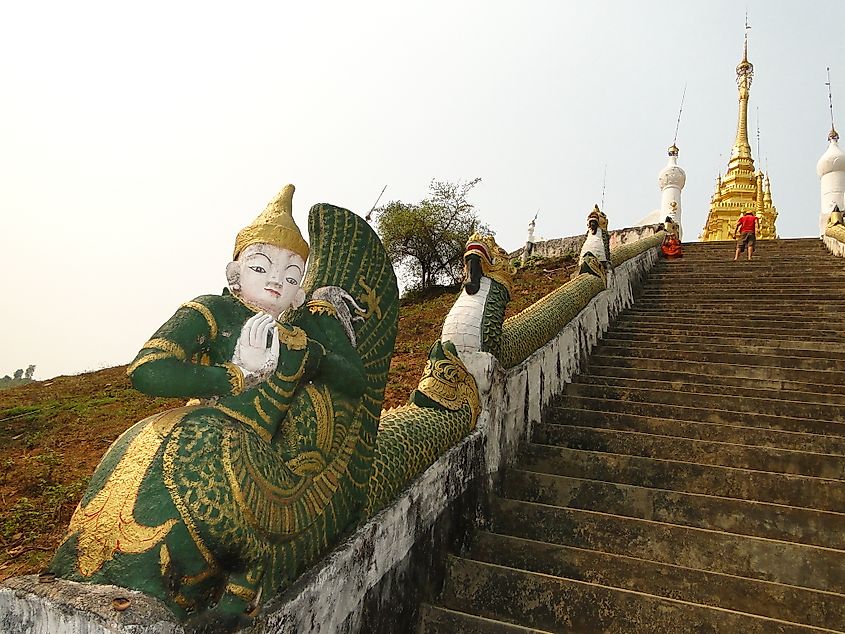
Countries That Start With The Letter W
There are several territories, regions, and constituent countries whose names begin with the letter "W," but no sovereign countries. So, what is the difference between these places and a country?
For most lay people, when they are asked to name a country, they often think of places that are officially sovereign countries, like the United States or Japan. Yet, places like Wales or Western Sahara do not always come to mind. This is because the latter two are not officially listed sovereign countries like the former two.
A sovereign country is a political entity with full autonomy and control over its internal and external affairs. It has internationally recognized and defended borders, a permanent population, a defined government, and the capacity to engage with other sovereign states. Territories/regions/constituent countries, on the other hand, are broad terms that generally refer to a geographical area with its own distinct culture, history, language, or government. It is often used to describe a region with recognized boundaries and a sense of national identity. However, the terms "territory," "region," and "constituent country" do not inherently indicate that a land has the full sovereignty and political independence of a typical country.
Now that we have that out of the way, here is a list of all current places around the world, official and non-official, that begin with the letter W.
Wales

Wales is one of the four "constituent countries" that make up the United Kingdom (the others being Scotland, England, and Northern Ireland). A constituent country is a term that describes a region under administration by a separate power, and should not be confused with country. Located on the western side of Great Britain, Wales is known for its rugged coastline, rolling hills, and the majestic peaks of Snowdonia, the highest mountain range in southern Britain (Yr Wyddfa being the tallest peak, and maybe winning the number one spot for hardest to pronounce mountain world wide too). It has a population of 3,131,600 million as of 2022 and has a fairly diverse economy, mainly comprised of agriculture, forestry, manufacturing, and government, and a notable, yet relatively smaller, tourism industry.
People in Wales generally speak both English and the traditional Welsh language (Cymraeg), with over 97% of residents speaking either one or both languages as of 2021. Welsh is one of the oldest living languages in Europe and is spoken by a significant proportion of the population. This unique language and culture are celebrated in the annual Eisteddfod, a traditional festival of music, literature, and performance that usually takes place in August.
Wales is home to several notable historic sites, from medieval castles like Caernarfon and Conwy to ancient stone circles and Roman ruins. The constituent country's history is closely intertwined with that of England, yet it has retained a strong sense of national identity. Outdoor enthusiasts are also drawn from around the world to Wales for its abundance of natural beauty in its many world-class parks, including three national parks: Snowdonia, Brecon Beacons, and Pembrokeshire Coast.
Western Sahara

Western Sahara is a disputed territory located in the northwest of Africa, bordered by Morocco to the north, Algeria to the northeast, Mauritania to the southeast, and the Atlantic Ocean to the west. It covers an area of approximately 266,000 square kilometers, primarily consisting of the Sahara Desert landscape, with a sparse population of around 565,581 (as of 2021) concentrated in a few cities and refugee camps.
The region has a complex and complicated history of conflict and colonization. It was officially a Spanish colony from 1884 until 1975, when Spain withdrew, leading to a territorial dispute between Morocco and the indigenous Sahrawi people of the region, whose nationalist movement was known as the "Polisario Front." Following Spain's departure, Morocco claimed sovereignty over the Western Sahara, while the Polisario Front declared the establishment of the Sahrawi Arab Democratic Republic (SADR). This conflict triggered a war between the two sides, which eventually led to a ceasefire in 1991 under the supervision of the United Nations.
The political status of Western Sahara remains unresolved, with ongoing negotiations and UN-led efforts to find a lasting solution. The proposed UN-sponsored referendum on self-determination has yet to take place, leading to continued tensions in the region.
Life in Western Sahara is influenced by its challenging desert and mountain-covered environment and the elongated conflict in the area. Refugee camps in Algeria house thousands of Sahrawis displaced by the conflict, where they rely heavily on international aid. Despite the hardships, the Sahrawi people maintain a strong sense of identity and continue to strive for self-determination, keeping their culture and traditions alive during a plethora of uncertain circumstances.
Wa Self-Administered Division

The Wa Self-Administered Division is a unique administrative region in Myanmar, located within Shan State in the eastern part of the region. It has an estimated population of around 758,000 in both its northern and southern regions. It is home to the Wa people, an ethnic group with a distinct culture and language. The region's capital is Hapang, which is its political and economic center.
The Wa Self-Administered Division is characterized by its semi-autonomous status and the presence of several armed groups vying for control of the area. The United Wa State Army (UWSA) is the dominant political and military force in the region, having entered into a ceasefire agreement with the Myanmar government in the late 1980s. This agreement has allowed the UWSA to maintain significant control over the area, leading to a sort of autonomy in many aspects of governance, including administration, security, and economic development, leading some to consider it its own country (again, a heavily disputed title depending on who you ask).
Geographically, the WA Self-Administered Divison has a very mountainous terrain that is mostly covered in dense forests, which have historically provided a natural barrier and made access difficult. The Wa people have a unique and rich culture that shares some similarities with groups from other nearby countries such as China and Thailand. It has its own customs, traditions, and festivals from the rest of Myanmar and other groups in Southeast Asia, too. However, the Wa Self-Administered Division also faces challenges related to its political status, the presence of armed groups, and ongoing conflicts in other parts of Myanmar.
Final Thoughts
Since there are no sovereign states that start with the letter W, very few existing countries (or even places that loosely follow the definition of "country") begin with that letter, and with countries like Western Samoa being renamed to simply "Samoa" in 1997, this was never going to be an extensive list. Regardless, these three destinations are all from incredibly different places on the globe and have unique cultures that should be experienced by travelers looking to explore all reaches of the world. Adding all three countries noted here to your "been there" list is a true feat that should be celebrated.











